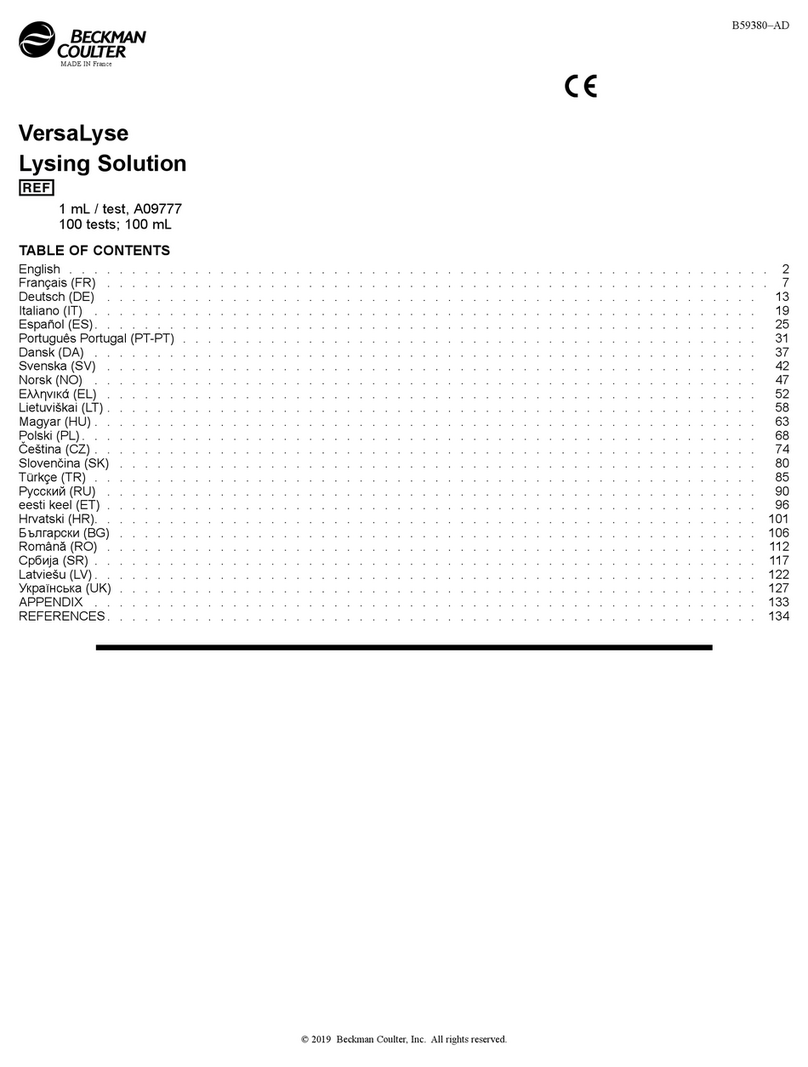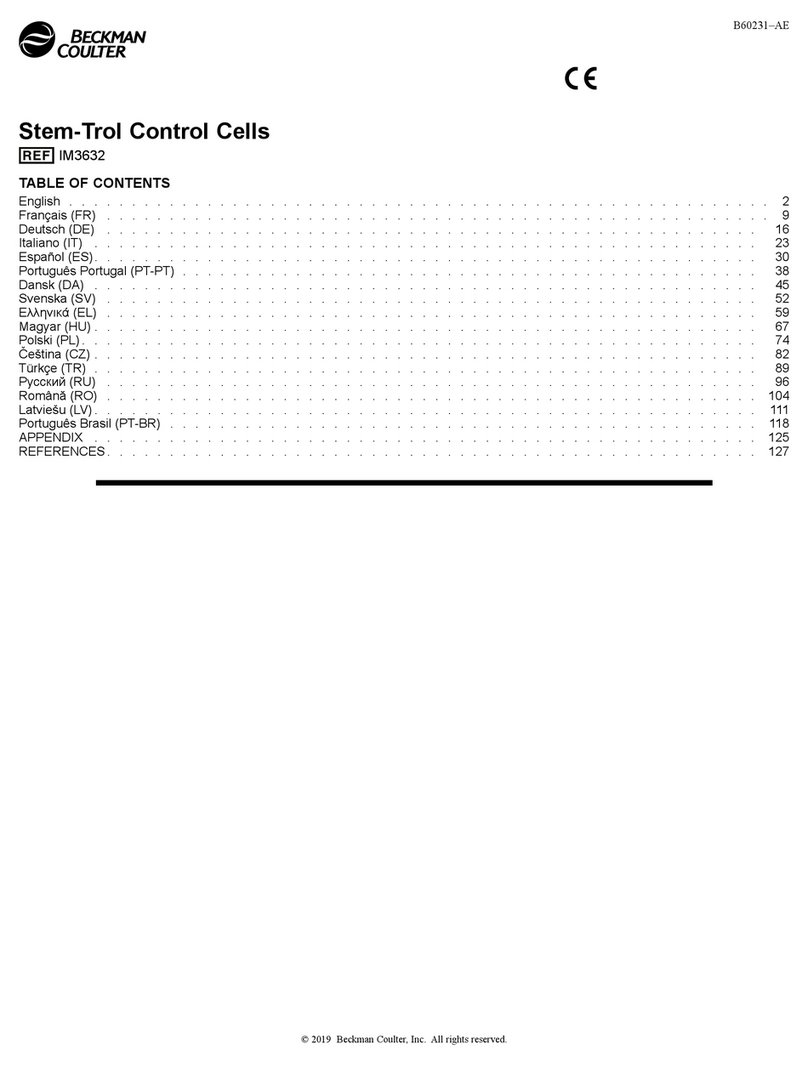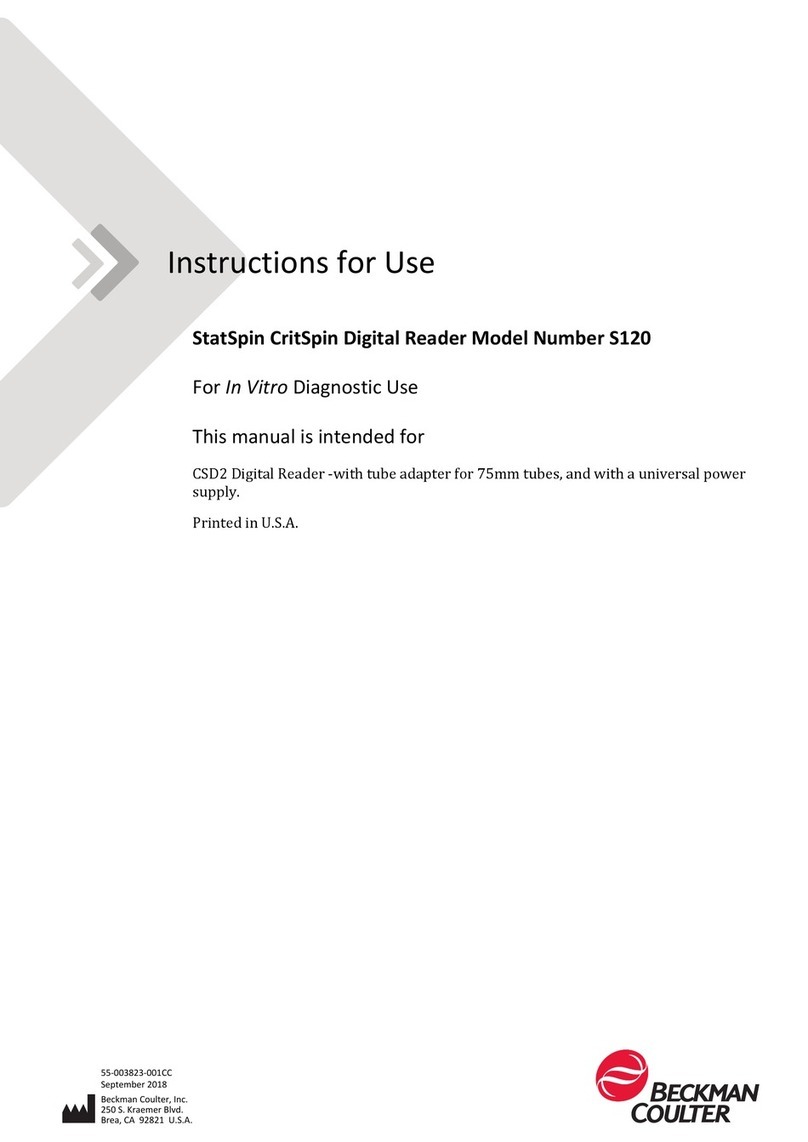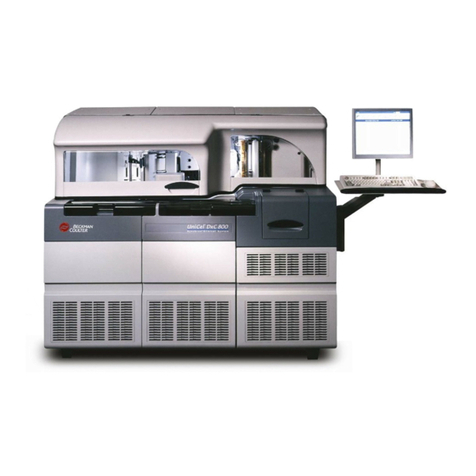
WARNINGS AND PRECAUTIONS
READ ALL PRODUCT MANUALS AND CONSULT WITH BECKMAN COULTER-TRAINED PERSONNEL BEFORE ATTEMPTING
TO OPERATE INSTRUMENT. DO NOT ATTEMPT TO PERFORM ANY PROCEDURE BEFORE CAREFULLY READING ALL
INSTRUCTIONS. ALWAYS FOLLOW PRODUCT LABELING AND MANUFACTURER’S RECOMMENDATIONS. IF IN DOUBT AS
TO HOW TO PROCEED IN ANY SITUATION, CONTACT YOUR BECKMAN COULTER REPRESENTATIVE.
BECKMAN COULTER, INC. URGES ITS CUSTOMERS TO COMPLY WITH ALL NATIONAL HEALTH AND SAFETY
STANDARDS SUCH AS THE USE OF BARRIER PROTECTION. THIS MAY INCLUDE, BUT IT IS NOT LIMITED TO,
PROTECTIVE EYEWEAR, GLOVES, AND SUITABLE LABORATORY ATTIRE WHEN OPERATING OR MAINTAINING THIS OR
ANY OTHER AUTOMATED LABORATORY ANALYZER.
HAZARDS AND OPERATIONAL PRECAUTIONS AND LIMITATIONS
WARNINGS, CAUTIONS, and IMPORTANTS alert you as follows:
WARNING - Can cause injury.
CAUTION - Can cause damage to the instrument.
IMPORTANT - Can cause misleading results.
WARNING Risk of operator injury if:
r All doors, covers and panels are not closed and secured in place prior to and during instrument operation.
r The integrity of safety interlocks and sensors is compromised.
r Instrument alarms and error messages are not acknowledged and acted upon.
r You contact moving parts.
r You mishandle broken parts.
r Doors, covers and panels are not opened, closed, removed and/or replaced with care.
r Improper tools are used for troubleshooting.
To avoid injury:
r Keep doors, covers and panels closed and secured in place while the instrument is in use.
r Take full advantage of the safety features of the instrument. Do not defeat safety interlocks and sensors.
r Acknowledge and act upon instrument alarms and error messages.
r Keep away from moving parts.
r Report any broken parts to your Beckman Coulter Representative.
r Open/remove and close/replace doors, covers and panels with care.
r Use the proper tools when troubleshooting.
CAUTION System integrity might be compromised and operational failures might occur if:
r This equipment is used in a manner other than specified. Operate the instrument as instructed in the Product Manuals.
r You introduce software that is not authorized by Beckman Coulter into your computer. Only operate your system’s
computer with software authorized by Beckman Coulter.
r You install software that is not an original copyrighted version. Only use software that is an original copyrighted
version to prevent virus contamination.
IMPORTANT If you purchased this product from anyone other than Beckman Coulter or an authorized Beckman Coulter
distributor, and, if it is not presently under a Beckman Coulter service maintenance agreement, Beckman Coulter cannot
guarantee that the product is fitted with the most current mandatory engineering revisions or that you will receive the most
current information bulletins concerning the product. If you purchased this product from a third party and would like
further information concerning this topic, call your Beckman Coulter Representative.













































